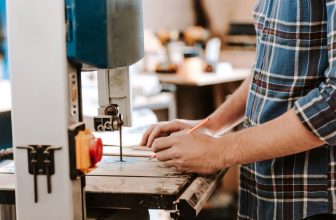Contents
So you’re in the market for a new cordless drill and don’t know where to turn. You are not alone as it’s a common problem for consumers, and easy to become torn between two models.
That’s where features can make the difference, and our drill feature guide was put together to help guide you through the process of purchasing the perfect tool. After all, there is more to think about than just the battery life.
The Motor
There are typically two kinds of motors in cordless drills with brushed and brushless although manufacturers will try to confuse you with buzz words and tricky terminology.
Simply put, tools with brushless motors are ideal if your budget can accommodate them. They keep friction at a minimum while adjusting the amount of power. Brushless motors are more efficient overall and less likely to experience wear and tear compared to brushed motors.
They are also optimized to save battery life, not drain them dry. By comparison, brushed motors don’t “adjust” to the toughness of the materials you’re working with and will drain a battery faster.
If you plan to use your drill frequently, pay up and pick up a model with a brushless motor – you won’t regret it.
Chuck Size
The size of a drill’s chuck tells you how large of a bit it can take. A drill with a 3/8” chuck can handle bits with shanks up to 3/8,” and larger chuck sizes are generally tied to more powerful drills.
Why is this important? Well, it all depends on what you plan to do with your drill.
Certain bits will only fit on drills with larger chucks so that new paddle bit you picked out may not work on a drill with a tiny chuck. For light-duty use, it’s usually not a major issue but something to keep in mind nonetheless.
The other area to consider is keyless chucks although they are almost standard on many classes of drills these days. A “keyed” chuck requires a special tool to change the bit whereas a keyless chuck drill can be tightened or loosed by hand.
Speed
While speed can kill on highways and byways, it is essential with cordless drills.
Drills are for more than just making holes as well, and are commonly used by homeowners as high-powered screwdrivers. Whether you are drilling a pilot hole or putting together a desk, you need to adjust the speed for the task.
If your drill doesn’t have enough speed or power, you’re not going to be able to get through the wood or metal that you’re trying to work with. That’s where variable speed drills come in handy.
This drill feature allows you to adjust the speed through the trigger while a good clutch lets you control the depth. That means you can set your drill to stop a screw before it sinks 2” into your deck or adjust accordingly to get through metal or brick.
While the best cordless drills allow you to dial things up or down to suit your needs, you still need to consider how much speed you need. For heavy-duty use, look for a drill capable of hitting at least 1,000 RPM or higher.
Batteries
In the world of cordless drills, voltage means power. The more voltage your battery has, the more juice you’ll have to work with before you need to recharge. While that certainly sounds simple, there’s more to it simply going for the biggest numbers on the box.
If voltage equates to horsepower, the amperage is the equivalent to your gas tank. This tells you how long your battery will actually last and is equally as important as power on cordless tools.
Unless you want to spend half the day running for the wall socket, pay close attention to the amperage as well as the voltage.
You also want to check the warranty on the batteries as they typically have their own separate warranty from the drill.
Replacement costs should be on your checklist as well. Drills always last longer than the batteries, and it’s good to know how much an extra will cost before you spend several hundred dollars on the drill.
Li-ion batteries still rule the roost, but NiMH batteries are an option and an interesting alternative as well. They aren’t available from every manufacturer, but it is something you’ll come across from DeWalt and others.
Chargers
Chargers are a necessity, but can still be a bit of a pain to deal with. While they allow you to remove the cord from your drill, they still need to stay tethered to a wall socket, and some can be quite fragile as well.
Build quality aside, all chargers can take your battery from zero to 100%, but some do it quicker than others. If speed is important to you, look for a kit that comes with a quick charger. These can juice up even the largest batteries in only a few hours but can add to the overall cost.
Alternatively, you can buy quick chargers separately for most popular models, but only use the charger designed for your drill and never one from another brand.
Smart chargers are another option to consider if budget isn’t a concern and you truly want the best.
This new breed of charger can monitor your Li-ion battery while it’s in the dock and shut things down if it overheats. It can let you know if there’s an issue, and some can charge other devices as well including your smartphone or slate.
Ergonomics and Ease of Use
If you only plan to use your drill for the occasional project around the house or outdoors, this area probably won’t be all that important to you. Consumers that don’t plan to leave home without their cordless buddy in their bag will want to continue reading.
Large batteries are heavy, and while great drills are balanced to counteract that, it can still tire you out during the day.
The more powerful the drill, the heavier it’s going to be. Unless you are used to using power tools or beat on an anvil for a living, you may be surprised at how quickly a large cordless drill can wear you out.
The type of handle is also important as some industrial models will have a “T-handle” while others are a bit more ergonomic with normal grips or regular use.
Regardless of the type of handle, pay attention to the grip and if it’s wrapped or just hard plastic. Grips with padded inserts can come loose over time, so the contours and texture of the handle are just as important in comfort is a concern.
Conclusion
We covered the main drill features you should think about before purchasing a new cordless drill, but factors like the warranty should play a part in your buying decision.
If you have your eye set on a particular brand, it’s also worth checking into the company’s cordless tool ecosystem. Many manufacturers’ drill batteries will work with other tools as well, so it may pay to focus on one brand if you like the rest of their cordless lineup.






